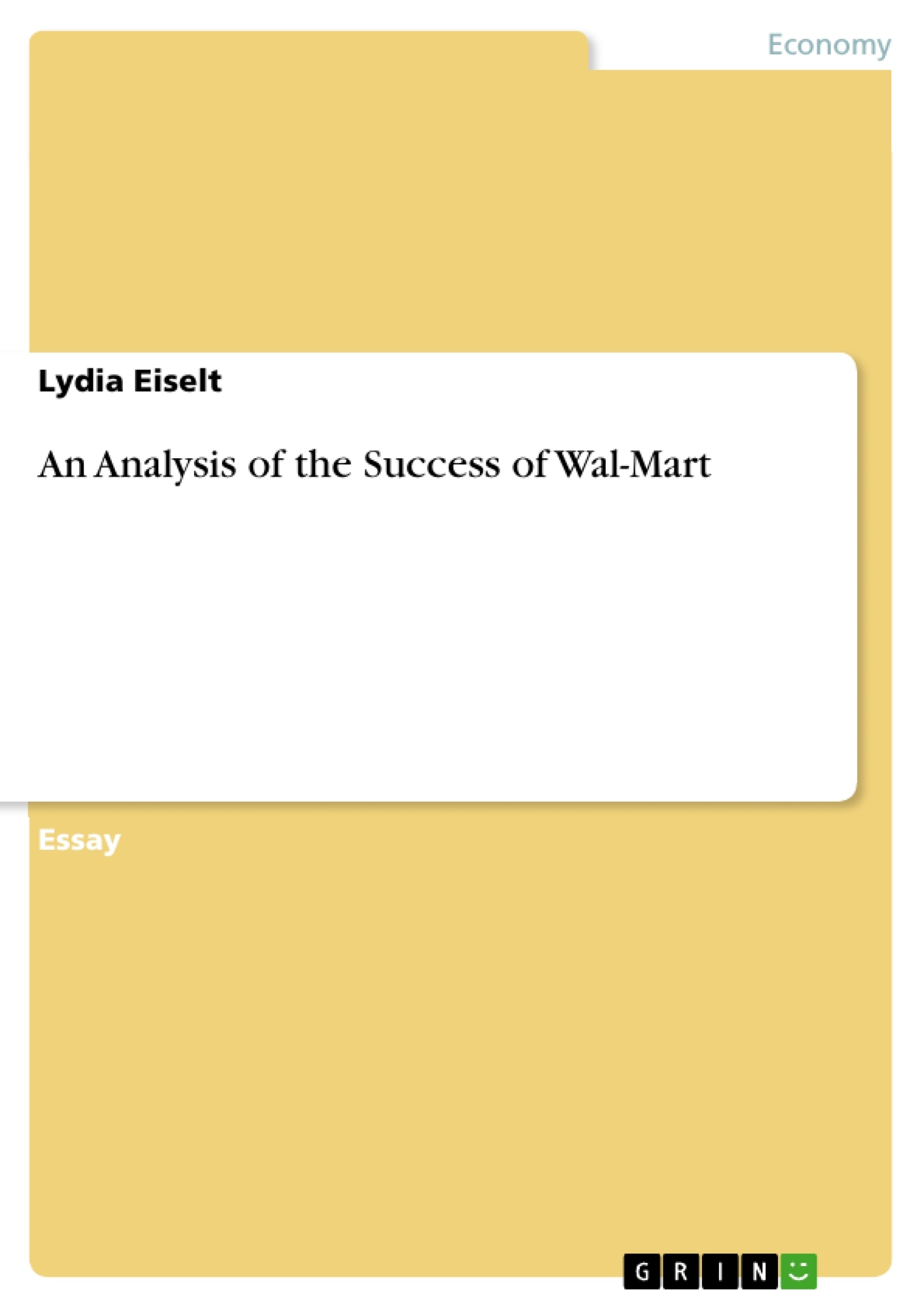Wal-Mart has been extremely successful as a retailer and distributor; this can be seen when looking at its global sales. The determinants of this success are manifold and relate to its strategic decisions regarding the ways in which it competes. In analysing the company's strategies the effects that suppliers, competition and consumers have on it, and the effect that Wal-Mart has on them, need to be taken into consideration. The primary economic concepts that are used to explain Wal-Mart's growth and efficiency are economies of scale and scope, as well as factors related to entry and exit within the industry.
Basker (2007) argues that Wal-Mart's success can be considered from two different perspectives. Firstly, by increasing its size Wal-Mart has been able to take advantage of economies of scale and therefore reduce costs. Secondly, by having lower costs Wal-Mart has been able to grow and take advantage of economies of scale. These two arguments are linked and enforce each other, since growth and efficiency are both a cause and a consequence of economies of scale. One initial reason for Wal-Mart's lower cost is traced back to superior inventory and distribution technology that increase efficiency since the company's stores operate within the retail chain rather than being individual stores. It can be argued that the cost structure of Wal-Mart determines it size, because its costs are reduced through growth; it is advantageous for Wal-Mart to continue doing so on the chain as well as the store level.
Table of Contents
- An Analysis of the Success of Wal-Mart
- Economies of Scale and Scope
- Purchasing Economies
- Inventory Management
- Economies of Density
- Network Effects and Supplier Relations
- Economies of Scope
- Market Entry and Exit
- Conditions for Entry
- Effects of Entry
- Post-Entry Barriers
Objectives and Key Themes
This paper examines the factors contributing to Wal-Mart's success as a retailer and distributor, focusing on its strategic decisions and competitive advantages. The paper analyzes Wal-Mart's use of economies of scale and scope, its impact on suppliers and competitors, and the challenges and opportunities it faces in market entry and exit.- Economies of Scale and Scope
- Wal-Mart's Impact on Suppliers and Competitors
- Market Entry and Exit Strategies
- Wal-Mart's Competitive Advantages
- The Dynamics of Wal-Mart's Growth and Success
Chapter Summaries
This section summarizes the key points of the paper, excluding any content from the conclusion or final chapter.- An Analysis of the Success of Wal-Mart: This section examines the economic concepts and strategic decisions that contribute to Wal-Mart's success. It explores how economies of scale and scope drive cost reductions and growth, and how these factors influence Wal-Mart's relationship with suppliers and competitors.
- Economies of Scale and Scope: This section dives into the specific ways Wal-Mart benefits from economies of scale and scope. It outlines the company's strategies for achieving purchasing economies, efficient inventory management, and economies of density.
- Network Effects and Supplier Relations: This section explores how Wal-Mart leverages network effects and its power over suppliers to gain further advantages. It discusses how Wal-Mart's scale and buying power influence supplier behavior and lead to cost reductions.
- Economies of Scope: This section explores the benefits Wal-Mart derives from economies of scope, specifically its broad product range and brand recognition. It discusses how Wal-Mart's brand strength allows it to sell own-brand products and how this strategy contributes to its overall success.
- Market Entry and Exit: This section analyzes Wal-Mart's market entry and exit strategies and their impact on competition. It examines the conditions for entry, the reactions of incumbents, and the factors that influence Wal-Mart's decisions to enter or exit specific markets.
- Conditions for Entry: This section delves into the conditions that favor Wal-Mart's market entry. It discusses the low barriers to entry, the typically accommodating responses from incumbents, and the strategies Wal-Mart employs to minimize entry costs.
- Effects of Entry: This section explores the effects of Wal-Mart's entry on incumbent retailers. It outlines how Wal-Mart's presence can lead to price competition, changes in product range, and even the exit of smaller retailers.
- Post-Entry Barriers: This section examines how Wal-Mart's entry can create new barriers for potential entrants. It discusses how Wal-Mart's scale and cost advantages make it difficult for others to compete effectively.
Keywords
The primary focus of this paper is on the success of Wal-Mart, examining its strategic decisions, competitive advantages, and impact on the retail industry. The paper centers on key concepts including economies of scale, economies of scope, network effects, market entry and exit, and the role of suppliers and competitors in shaping Wal-Mart's growth and success.- Quote paper
- Lydia Eiselt (Author), 2013, An Analysis of the Success of Wal-Mart, Munich, GRIN Verlag, https://www.grin.com/document/266297




